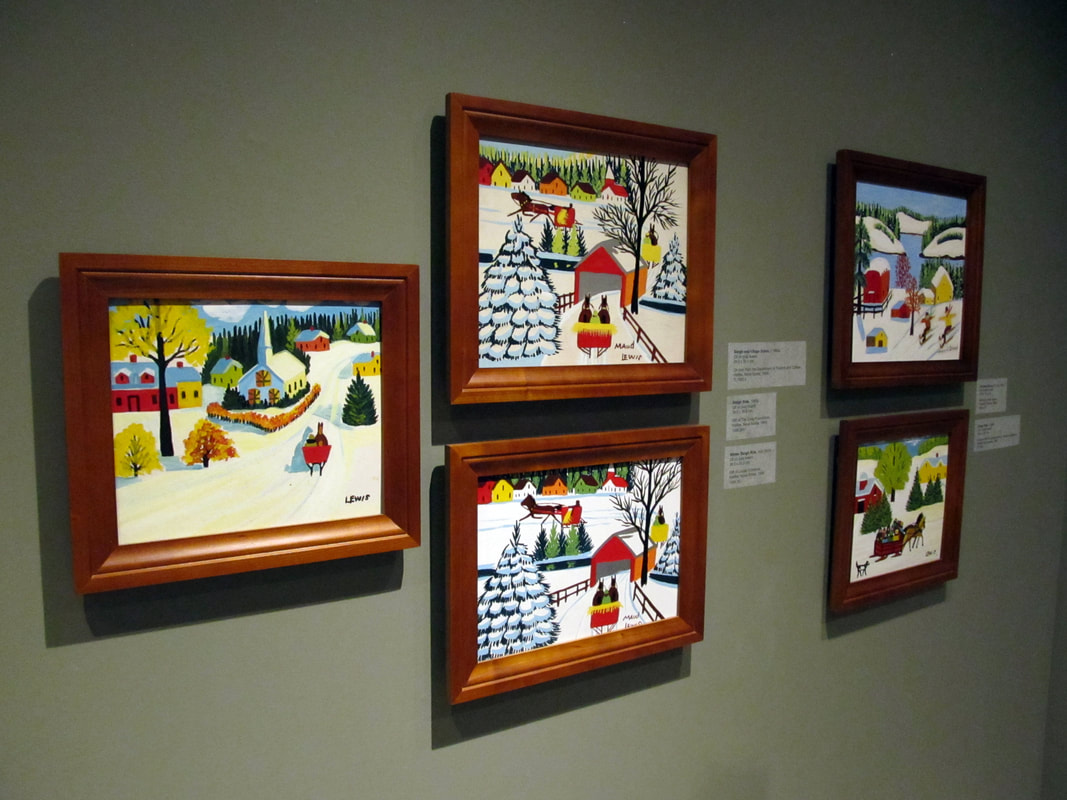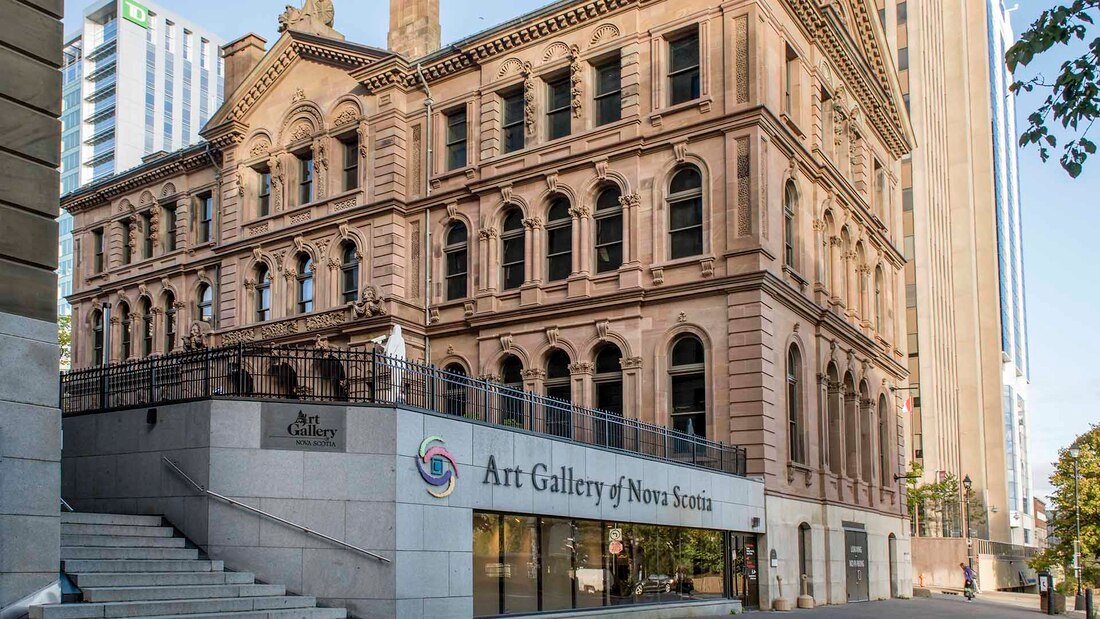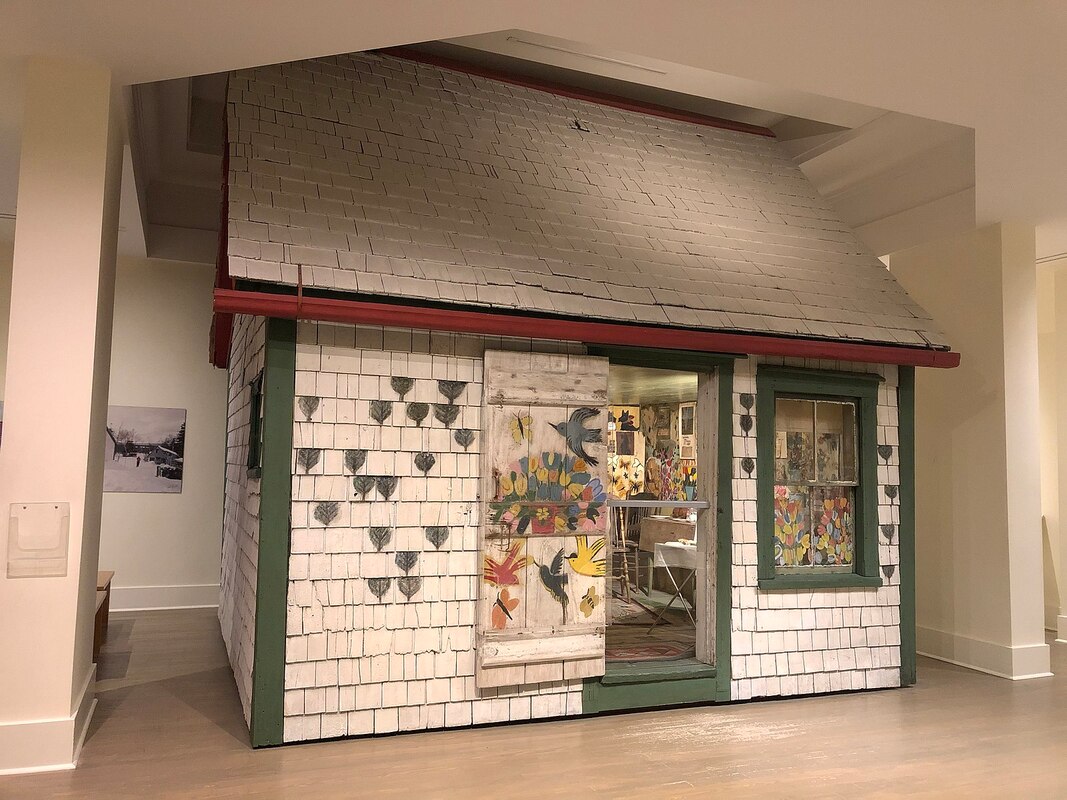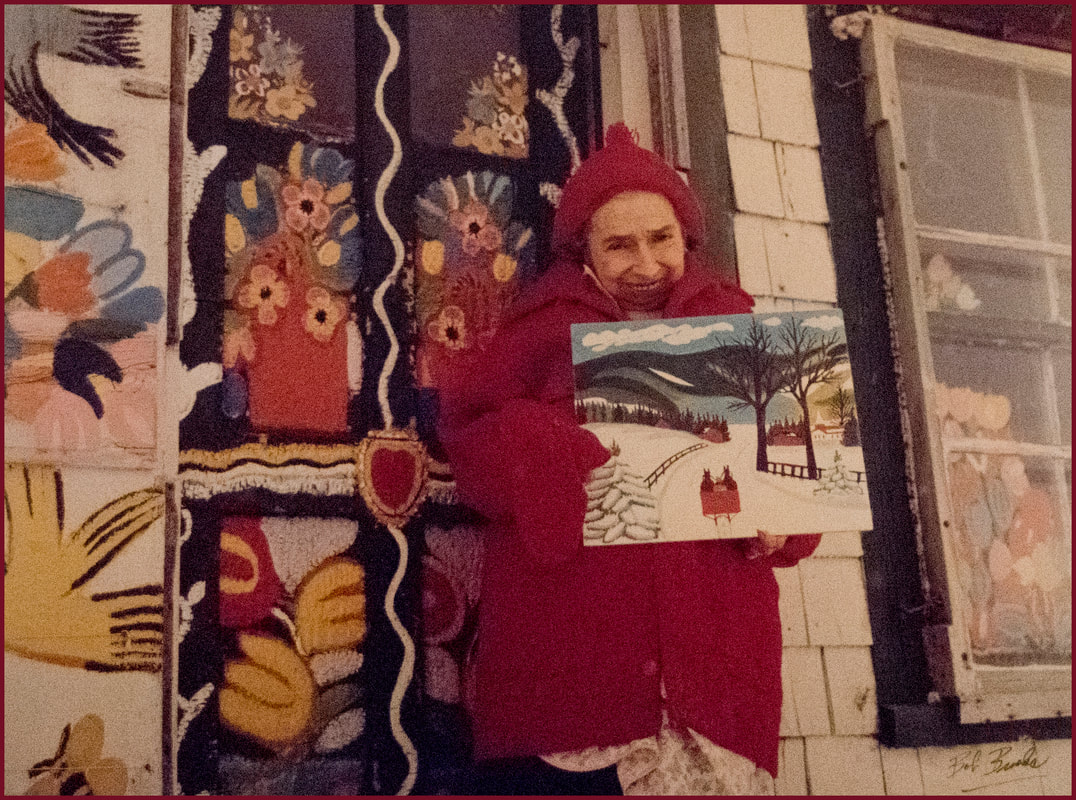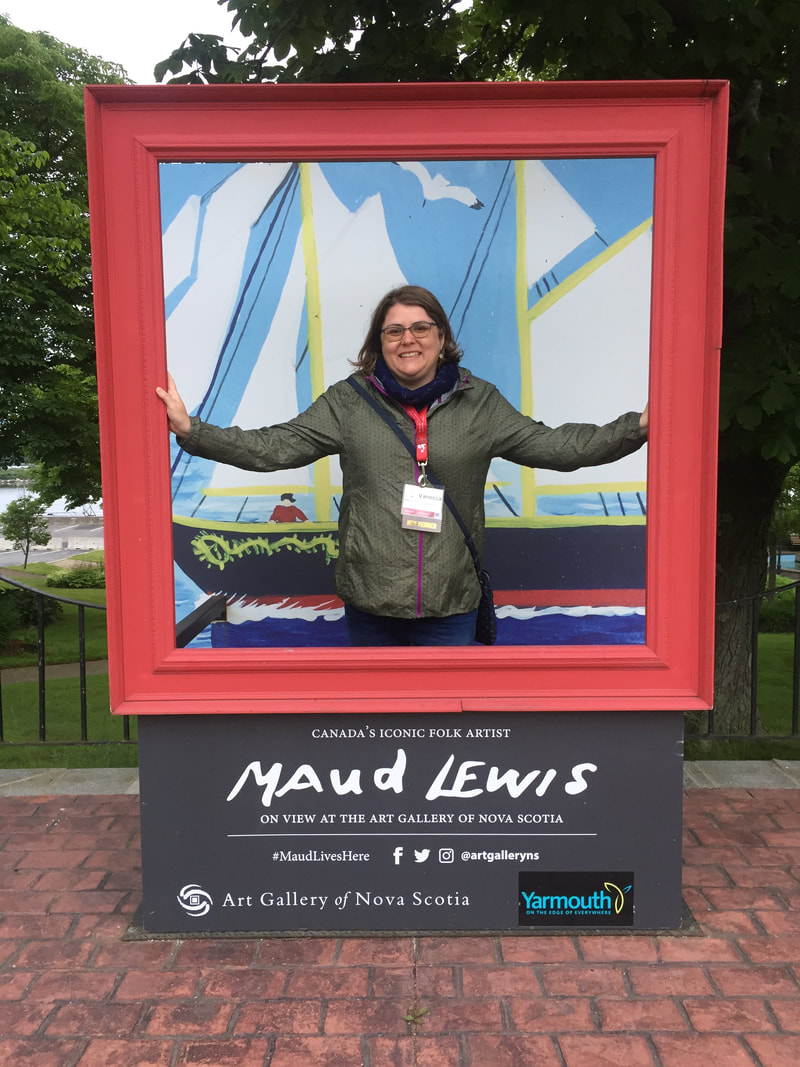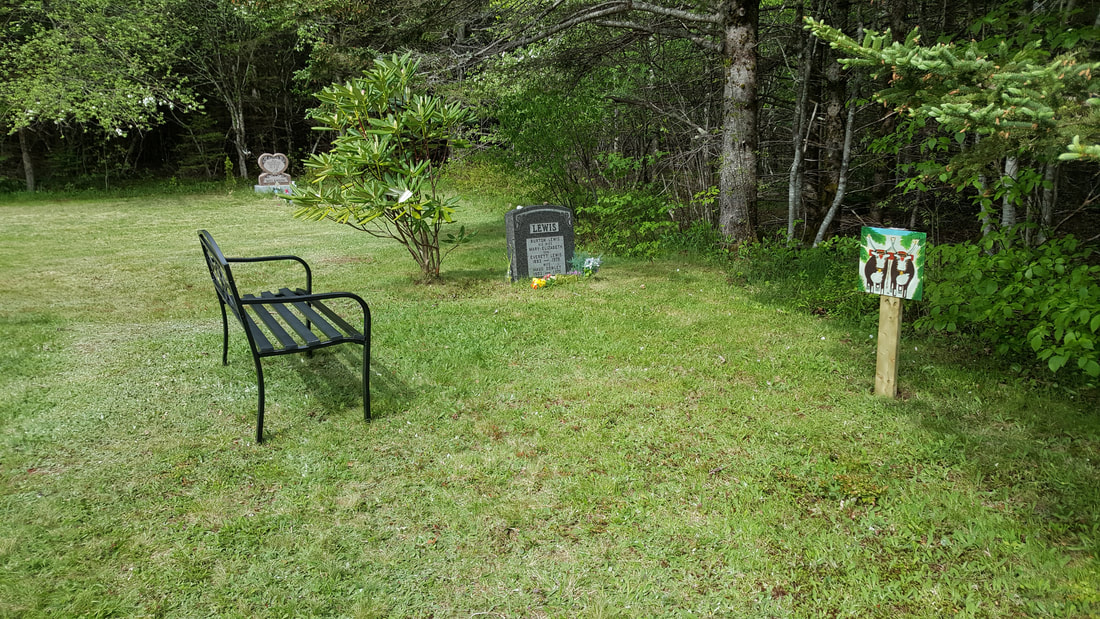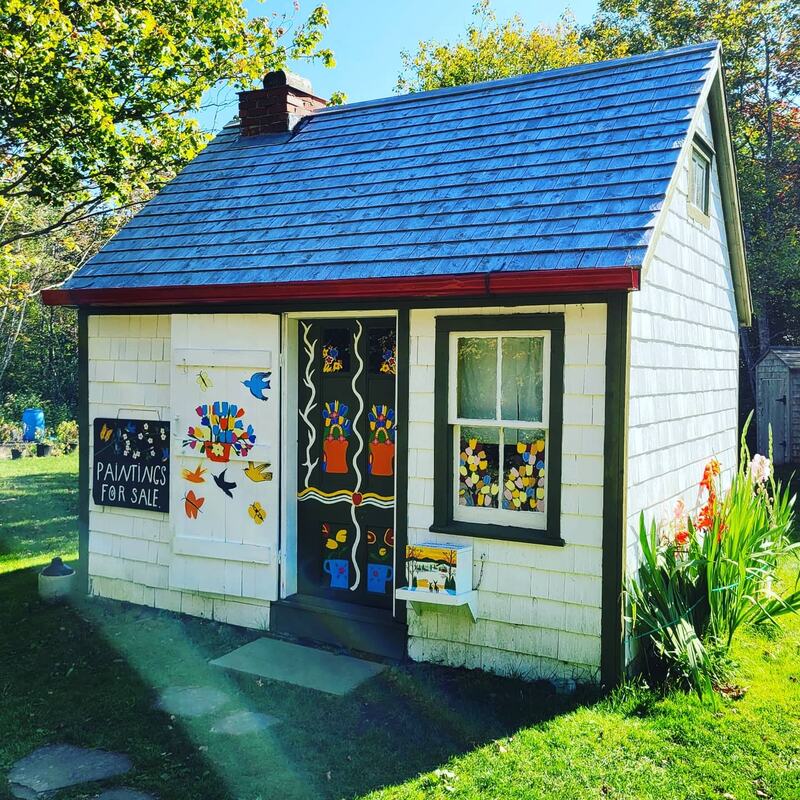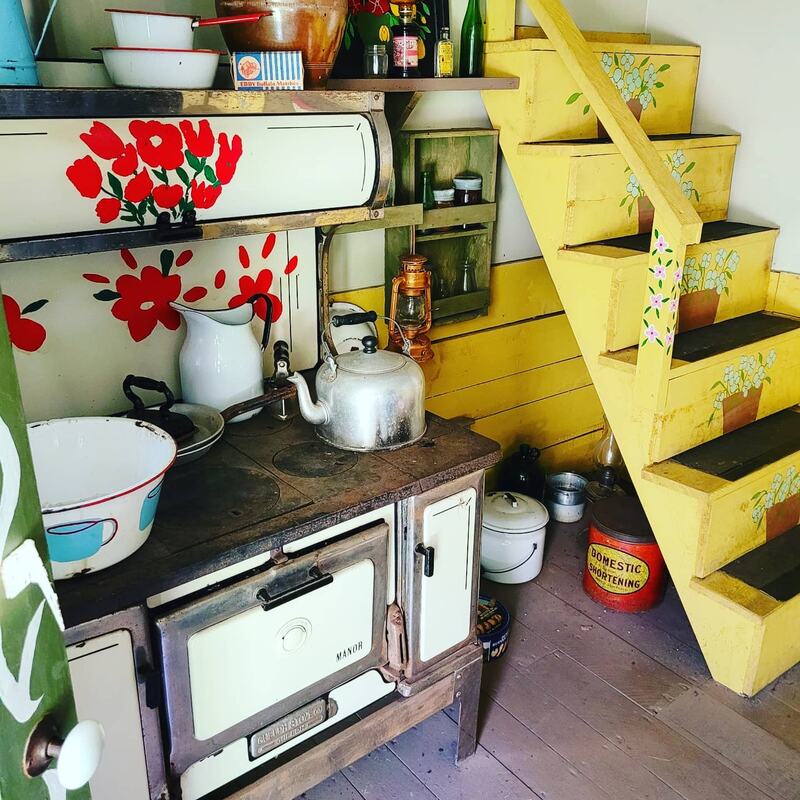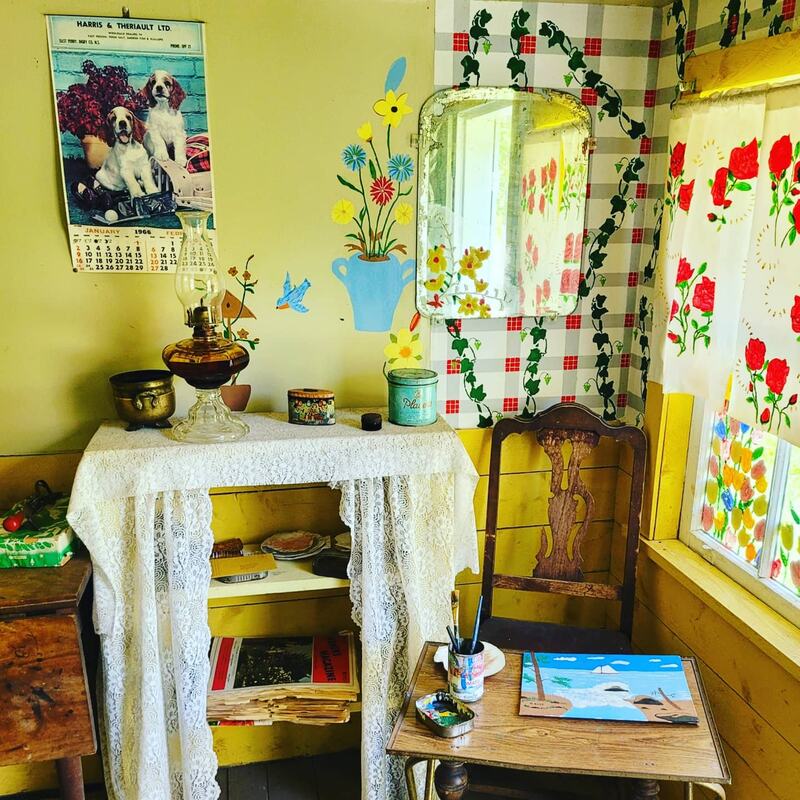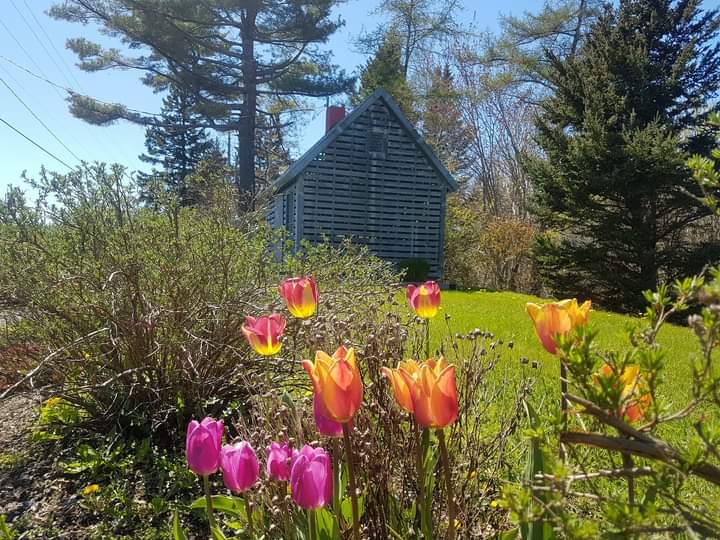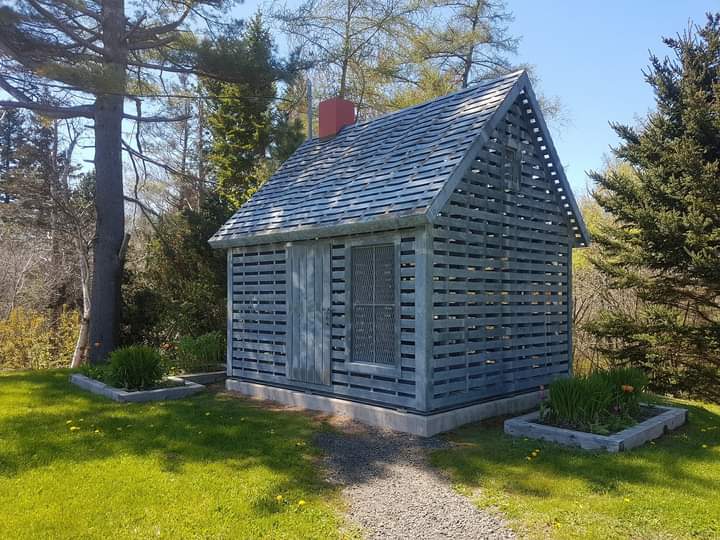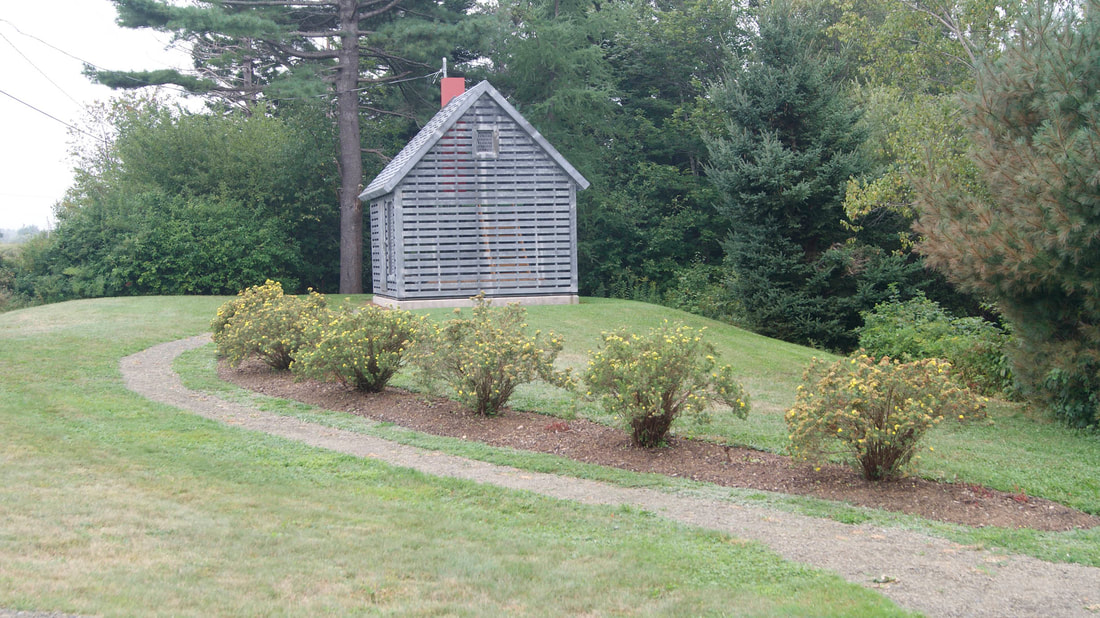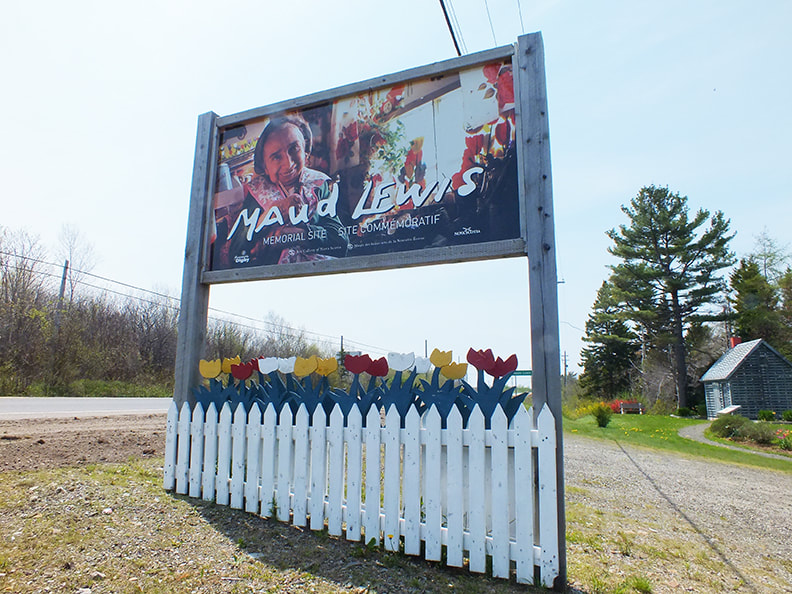If you love paintings by Maud Lewis, Nova Scotia's beloved folk artist, as much as I do, you'll want to check out these sites. Maud Lewis was born Maud Dowley in 1903 in the southern Nova Scotia community of Yarmouth. By her death in 1970, she was recognized as a leading Canadian folk artist. Yet the woman who would become Nova Scotia’s treasure spent her life undervalued. If you love paintings by Maud Lewis, you will appreciate her talents even more after learning about her life and visiting the places in Nova Scotia that showcase her gifts. In the most barren of circumstances, Maud created art – spectacular art. Her adulthood was a story of poverty, crippling and terrifying, and far from the romanticised austerity that sometimes creeps into her present-day narrative. Living with what we now recognize as degenerative juvenile rheumatoid arthritis, Maud bore constant pain. Married life in Digby brought a meagre house and a worse husband. Only a few neighbours offered comfort through hot meals, hot baths, and furtive visits. Defying her circumstances, she generated one of the most impressive yields of any artist. She painted shutters, baking pans, and scallop shells, along with nearly every surface of her diminutive house. She sold thousands of paintings depicting rural life, including oxen teams with gilded yokes and fluffy farm cats with wary eyes, often for just a dollar or two from her perch by the side of the road, a ploy devised by her husband to exploit sympathies and coax sales. Maud is often remembered as childlike with her petite stature and shy smile. But she was a gritty survivor, canny enough to turn her talents into a livelihood, carving a space for herself in an inhospitable world. I grew up in Nova Scotia, and I can’t remember a time when paintings by Maud Lewis weren’t a part of my life. As such, I’ve come to love these tourist attractions dedicated to her. Visiting them should be on any art lover’s travel list. See dozens of paintings by Maud Lewis, along with her painted house, at the Art Gallery of Nova Scotia in HalifaxThe Maud Lewis Painted House is the crown jewel of the Art Gallery of Nova Scotia, housed in its own gallery and surrounded by dozens of paintings by Maud Lewis. However, its journey to the gallery almost never happened. The house deteriorated after Maud, and later her husband Everett, passed away and was soon in danger of being irrevocably damaged. The Maud Lewis Painted House Society was formed in Digby to rescue the structure, which was eventually sold to the gallery in 1984. It took a further ten years for restoration work to begin. At approximately 13.45 feet by 12.46 feet, the house that Maud and Everett shared in the hamlet of Marshalltown, just outside Digby, was small even by modern “tiny house” standards. However, the Lilliputian dwelling was home to thousands of brushstrokes, as Maud covered nearly every surface with her artwork. The colourful building was soon a well-known landmark in the region. My colleague Sandra Phinney has written of how her mother would bring her and neighbourhood children to skate in Digby, stopping each time at the fanciful little house on the way home to buy a $2 painting (and slip an extra $2 in Maud’s apron, defying the churlish Everett). I spoke with gallery curator Shannon Parker about what life would have been like for Maud without plumbing or electricity in this house. Poverty was crushing, and creature comforts were few. As she so astutely said, “It’s not romantic to live without water”. However, Parker also pointed out that domestic tasks in this pint-sized dwelling were limited, and Everett did most of the chores. Maud had freedom from domestic responsibilities that many women did not. Yet, under Everett’s grudging eyes, she was often denied many freedoms other women enjoyed. The house was both canvas and confinement, and its flowered walls contained a complex world. Visiting the Art Gallery of Nova Scotia, the treasured painted house, and its collections of paintings by Maud Lewis. The gallery is located in downtown Halifax and you can see a great number of exhibits in a short amount of time. However, check the gallery’s website for their current hours of operations, as it was closed for maintenance work when I published this blog post in February 2024. Absorb Maud Lewis' family history in YarmouthMaud’s Yarmouth childhood was flush with artistic influence. Her father was a respected harness maker, and her mother was a talented artist. Biographer Lance Woolaver’s richly detailed work shows that a young Maud worked with her mother to create hand-painted Christmas cards. The Yarmouth County Museum is an excellent place to learn more about the town Maud once called home. They occasionally host groups and events related to Lewis’s life (like the Rugg Bees, a rug-hooking collective that counts Lewis among its influences). You can glimpse Maud’s family roots at the Yarmouth Mountain Cemetery, where her parents are buried. Yarmouth is the only location outside Halifax to have a branch of the Art Gallery of Nova Scotia. The community is a must-see spot for any Maud Lewis admirer. Pro Tip: While the Hollywood biopic Maudie contains gorgeous scenery, you’re not seeing Yarmouth or any other Nova Scotia vista on the big screen. Filming took place in the province of Newfoundland. Get the rest of the story at contemporary galleries across Nova ScotiaYou’ll see Maud-references everywhere in Nova Scotia, including at many contemporary galleries where artists sometimes bring a critical eye to Maud’s story and how it has been repackaged in recent years for commercial benefit. Rug-hooking artist Laura Kenney is one such creator who has produced several pieces that put an exacting lens on how Lewis’s life is portrayed. You can see pieces of Kenney’s work at the Secord Gallery in Halifax and the Harvest Gallery in Wolfville. I love a piece called Digby County’s Banksy, which imagines a “Maud-ified” lighthouse. See a few paintings by Maud Lewis and more folk art at this Liverpool destinationA collection of small museums and outright oddities, the Rossignol Cultural Centre has two attractions that interest Maud Lewis fans. Its outdoor “cultural village” contains a replica of Maud’s tiny Digby home. Additionally, its Folkart Museum exhibits pieces by Lewis and other Nova Scotian creators. Before you head to the Rossignol, take a moment to check on their hours of operation. In recent years, it appears that their hours were limited (even in peak season) and sometimes they just open for groups. Honour her life by visiting Maud Lewis' grave in DigbyMaud’s final resting spot is about ten minutes from her former homestead. She is one of four commemorated on the Lewis headstone, along with her in-laws and her husband, Everett. She is listed last, under the word “wife". At the time of her death, Maud was gaining international recognition, but Everett had to get the last word. Everett Lewis is a character who evokes both tremendous compassion and deserved revulsion. A survivor of gripping childhood poverty who lost members of his family in the poor house, he was also a serial sexual harasser, clawing at women and girls with impunity. Often described as a “miser,” in actuality, he was a financial abuser, scurrying away the entirety of Maud’s earnings and pilfering the batteries of her radio to prevent her from draining them. He was not the kind of man to commemorate his wife. He was, however, the kind to sell the sympathy cards he received after her death just to receive a dollar. Illiterate, Everett never knew that condolences from President Richard Nixon were among the letters and cards he sold. Pro Tip:Finding Maud’s grave is easy enough, as signposts featuring her famous oxen paintings mark both the driveway and the grave itself. In 2017, a QR program was introduced to help visitors easily find directions from the Maud Lewis Memorial Site to the North Range Cemetery. Tour a replica of Maud Lewis' painted house not far from where the original was located.If you cannot visit the original Maud Lewis Painted House at the Art Gallery of Nova Scotia, the Murray Ross Replica near Digby will give you a sense of what once stood nearby. Local resident Murray Ross grew up near Maud and Everett’s residence. As an adult, he built a replica of their tiny painted house next to his home, a labour-of-love project filled with copies of Maud’s paintings, and there’s even a replica of Everett’s woodshop. Ponder art and design at the Maud Lewis Memorial Park where her tiny home once stood.There is no surer path to controversy than to ask a Digby resident what they think about the Maud Lewis Memorial Park. Standing in the footprint of her former home and surrounded by beautiful gardens, a steel replica of her tiny house swaps wood shingles and colourful paint for stark metal planks. It’s like someone envisioned the original structure and stripped it to a shell. Its harshest critics say that it looks like a jail cell, and at times, that’s precisely what the house was for Lewis. I loved it. The plainness of the memorial reminds me of the limitless potential of the proverbial blank slate. There’s also something haunting about it. In certain lights, the burnished metal looks like old cedar boards, turned silvery in the sun, worn to a sheen by coastal winds and polished by the salt air. The memorial has a ghostly nothingness to it, and I wonder if architect Brian MacKay-Lyons wanted to remind us that a house is just a house until someone makes it a home. And that someone was Maud.
If you enjoyed this piece, you'll also like: My Favourite Cozy Things To Do in Yarmouth Hidden Eyes and Community Ties at the Annapolis Royal Historic Gardens Canadian Travel Bucket List Roundup: Travel To The Maritime Provinces Comments are closed.
|
�
Recent Posts
Posts by Location
Post Categories
All
Posts by Date
June 2024
|
Disclaimers, Privacy, and Cookie Policy |
Top 100 Travel Influencer
As named by the Obama White House in 2014. |
© COPYRIGHT 2024. ALL RIGHTS RESERVED.
|

